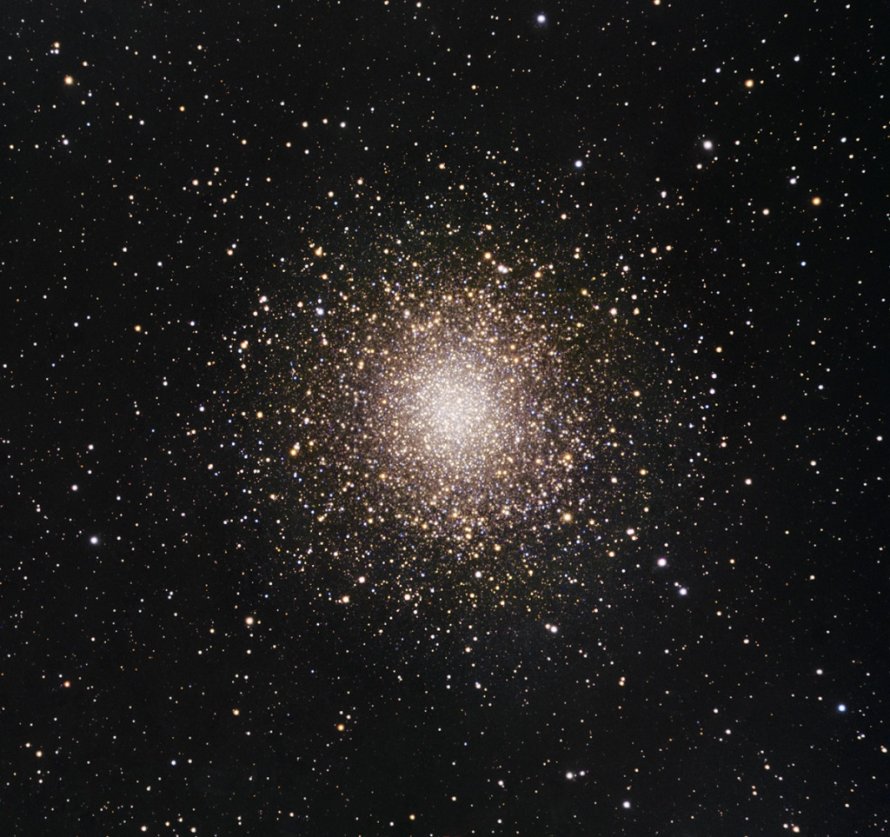M14 (NGC 6402)
Messier 14 (NGC 6402) is a globular cluster located in the constellation Ophiucus, in the Galactic Center of the Milky Way Galaxy in the Local Group of galaxies. M14 is 30000 light years away from Earth.
M14 is best viewed during mid-summer, is magnitude 8.3, and can be viewed with binoculars. M14 is 11' in apparent size. For reference, the full moon is 30'.
Observing difficulty: Intermediate
- Name:
- Type:
- globular cluster
- Constellation:
- Ophiucus
- NGC or IC:
- NGC 6402
- Magnitude:
- 8.3
- Viewing:
- binoculars
- Size:
- 11'
- Distance (light years):
- 30000 LY
- RA:
- 17h 37.6m
- Dec:
- -3 15'
- Season:
- mid-summer
- Milky Way location:
- Galactic Center
- Galaxy group:
- Local Group
- Messier Marathon #:
- 80
* The naked eye can see up to magnitude ~7-8 objects under ideal dark sky conditions.
Unraveling the Intrigue of a Distant Globular Cluster
As an amateur astronomer, exploring the depths of the universe often leads to encounters with mesmerizing cosmic objects like Messier 14 (M14), a globular cluster teeming with ancient stars. Situated in the constellation Ophiuchus, M14 offers a captivating viewing experience. This article delves into the discovery, physical characteristics, and star population of M14, discusses its brightness, and provides guidance on locating and observing it.
Discovery and Observation
First cataloged by French astronomer Charles Messier in 1764, M14 lies approximately 30,300 light-years away from Earth. Despite its distance, this cluster is an intriguing sight through a small telescope, appearing as a slightly elliptical patch of diffused light against the backdrop of the night sky.
Physical Characteristics and Magnitude
M14 spans about 100 light-years in diameter, housing several hundred thousand stars. Its apparent magnitude is around 7.6, rendering it invisible to the naked eye but readily observable with binoculars or a small telescope. When viewed under higher magnification and dark sky conditions, the peripheries of M14 show a sprinkling of faint stars that contribute to its intriguing visual complexity.
Stellar Composition
With an estimated age of 12 billion years, M14's star population is predominantly old, low-mass stars, typical for a globular cluster. These stars exhibit low metallicity, indicative of their ancient origins in the early universe. Variable stars constitute a significant population of M14, with over 70 known to exist, including RR Lyrae variables, which are often used as standard candles to estimate cosmic distances.
Astronomical Significance
M14 is particularly notable for being home to a confirmed nova, a stellar explosion. In 1938, a nova in M14 was photographed, which later brightened and faded over several months. This event underscores the dynamic nature of globular clusters and their value in studying stellar evolution.
Finding and Viewing M14
Finding M14 involves locating the constellation Ophiuchus, visible in the summer months for Northern Hemisphere observers. The cluster lies along the line between the stars Beta and Eta Ophiuchi, closer to the latter. Though M14 is not as bright as some other Messier objects, under dark sky conditions, it is readily visible through binoculars or a small telescope as a nebulous patch. Larger telescopes allow observers to resolve the cluster's outer stars, adding depth to the viewing experience.



